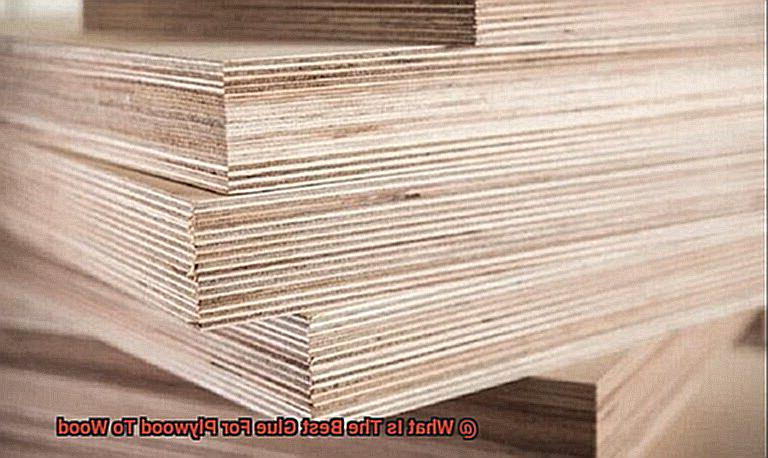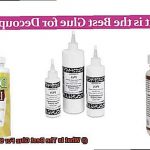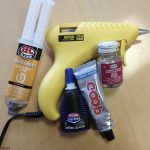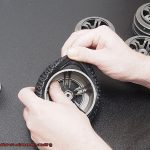Imagine this scene: you’ve meticulously planned your latest DIY project, carefully handpicked the finest plywood and wood pieces, and now it’s time to bring them together. With excitement bubbling inside you, you reach for your trusty glue, only to realize that choosing the right one for a flawless bond isn’t as easy as it seems. But fear not. We’re here to unravel this mystery and help you discover the best glue for plywood to wood.
Gluing plywood to wood may appear straightforward, but not all adhesives are created equal. Your choice of glue determines the durability, strength, and even the appearance of your final masterpiece. Whether you’re crafting furniture, cabinetry, or even a small creative project, selecting the right adhesive is crucial for seamlessly joining these materials.
In this captivating blog post, we’ll plunge into the fascinating world of glues and explore the top contenders for binding plywood to wood. By uncovering their unique characteristics, we’ll empower you with the knowledge needed to make an informed decision and achieve flawless results.
Let’s kick things off by discussing key factors to consider when choosing glue – think bond strength, drying time, and water resistance. We’ll delve deep into different glue types such as traditional wood glue, polyurethane glue, epoxy adhesives, and construction adhesive.
Moreover, we’ll delve into each adhesive’s pros and cons while comparing their performance on various plywood and wood surfaces. Our goal is simple: equip you with all the necessary knowledge so that you can confidently select the perfect glue for your specific project needs.
So whether you’re a seasoned woodworking pro or a passionate DIY enthusiast embarking on an exciting new adventure – get ready. We’re about to unveil the secrets behind finding the best glue for plywood to wood. Prepare yourself for bonds that stand strong against time and elevate your craftsmanship to new heights.
Types of Glue for Bonding Plywood to Wood
Contents
- 1 Types of Glue for Bonding Plywood to Wood
- 2 d. Construction Adhesive
- 3 Factors to Consider When Choosing the Best Glue
- 4 Advantages and Disadvantages of Different Types of Glue
- 5 Tips for Proper Application and Curing Times
- 6 Benefits of Using the Right Type of Glue for Bonding Plywood to Wood
- 7 Common Mistakes to Avoid When Working with Glues on Plywood and Wood Projects
- 8 Conclusion
In the world of woodworking, the glue you choose can make or break your project. When it comes to bonding plywood to wood, the right glue is essential for creating a strong and durable connection. In this comprehensive guide, we will explore the various types of glue available and their unique advantages. Ready to find your perfect woodworking partner? Let’s dive in.
PVA Glue
Are you a woodworking enthusiast searching for the holy grail of adhesives to bond plywood to wood? Look no further. In this comprehensive guide, we will delve into the wonders of PVA glue, also known as polyvinyl acetate glue. Prepare to be amazed as we uncover the secrets behind this versatile and reliable adhesive. So grab your tools, and let’s embark on a journey into the enchanting world of PVA glue.
Versatility Unleashed:
PVA glue is the undisputed champion when it comes to woodworking adhesives. Its prowess in bonding porous surfaces, particularly wood, is unparalleled. Whether you’re tackling a small DIY project or crafting a professional masterpiece, PVA glue rises to the occasion, creating an unbreakable bond that withstands the test of time.
Effortless Clean-Up:
Imagine this scenario: you’re engrossed in your project when suddenly, a stray drop of glue lands where it shouldn’t. Fear not. PVA glue is your knight in shining armor. Being water-based, it effortlessly succumbs to the cleansing power of water. Just grab a damp cloth or sponge, and with a few swift strokes, any excess glue disappears like magic. No harsh chemicals or arduous scrubbing required. With PVA glue, your focus remains unwaveringly on your project without being burdened by tedious clean-up tasks.
Swift Drying Time:
In the realm of woodworking, time is a precious commodity. Thankfully, PVA glue understands this all too well. Within a mere 15-30 minutes, depending on the brand and conditions, PVA glue sets like lightning. Gone are the days of interminable waiting periods. Instead, you can devote more time to other aspects of your project that require your undivided attention. However, remember that proper clamping is imperative during the drying process to ensure an unwavering bond. So don’t forget to enlist the aid of trusty clamps or weights.
Epoxy Glue
In our previous segment, we delved into the remarkable capabilities of PVA glue in plywood to wood bonding. Today, we embark on an exhilarating adventure to unveil the true marvel of adhesives: epoxy glue. Brace yourselves to witness the unrivaled strength and durability that epoxy brings to plywood and wood projects.
Advantage #1: Indomitable Strength
Prepare to be amazed by the sheer might of epoxy glue. Unlike its adhesive counterparts, epoxy unleashes a force of unparalleled tensile strength, making it a heavyweight champion in projects that bear heavy loads or endure intense stress. Whether you’re constructing robust furniture or tackling challenging woodworking endeavors, epoxy glue is your steadfast ally.
Advantage #2: Gap-Filling Wizardry
Have you ever struggled to bond uneven surfaces or fill those pesky gaps in your woodwork? Fear no more. Enter epoxy glue, your trusty wizard of gap-filling prowess. With its thick consistency, this adhesive maestro seamlessly bridges small gaps and irksome irregularities in the wood, ensuring a tight and secure bond. Consider epoxy glue your master craftsman, guaranteeing flawless connections and flawless repairs.
Advantage #3: Waterproof Superpowers
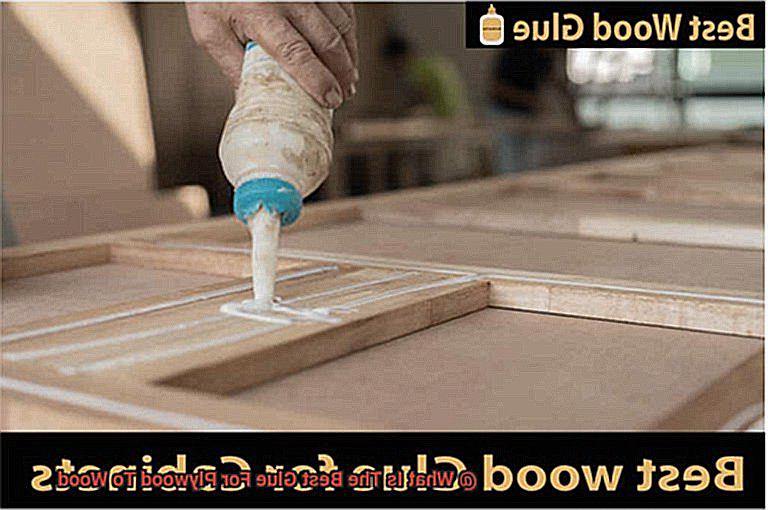
Imagine a world where moisture wields no power over your plywood bond. Behold the extraordinary waterproof superpowers of epoxy glue. Its exceptional resistance to water and moisture shields your creations from the perils of humidity or damp conditions. Rainy weather or accidental spills pale in comparison to the indomitable waterproof nature of epoxy glue, preserving your plywood-wood bond’s integrity and strength.
Advantage #4: Heat Resistance Extraordinaire
Planning to showcase your plywood creations outdoors or subject them to scorching temperatures? Fear not, for epoxy glue is your ultimate guardian. With its remarkable heat resistance, this adhesive triumphantly endures high temperatures without compromising its hold. Whether it’s an outdoor furniture masterpiece or a striking wooden structure basking in the sun’s rays, epoxy glue ensures your projects remain unwavering, come rain or shine.
Polyurethane Glue
Prepare to be amazed as we delve into the extraordinary world of polyurethane glue, the unrivaled champion of plywood-to-wood bonding. As an expert in this field, I am thrilled to share with you the incredible advantages and considerations of using this adhesive superhero. Brace yourself for a journey that will revolutionize your woodworking projects.
Advantage 1: Versatile Bonding Capabilities
Polyurethane glue possesses an unmatched ability to unite different materials with ease. Whether it’s plywood to wood, or any other combination, this adhesive reigns supreme. Through a mystical chemical reaction triggered by moisture, polyurethane glue forges an unbreakable bond capable of withstanding even the most demanding applications.
Advantage 2: Gap-Filling Marvel
Bid farewell to unsightly gaps and irregularities between plywood and wood. Behold the power of polyurethane glue’s secret weapon – expansion. As it cures, this remarkable glue expands, ingeniously filling in every nook and cranny, ensuring a seamless and rock-solid bond. Not only does this guarantee flawless connections, but it also grants a touch of flexibility to the materials without jeopardizing the bond’s integrity.
Advantage 3: Defying Nature’s Elements
Polyurethane glue scoffs at the challenges posed by moisture and ever-changing weather conditions. Whether your project resides indoors or braves the great outdoors, this adhesive remains undeterred. Its imperviousness to moisture makes it the perfect choice for both interior and exterior applications. Come rain or shine, scorching heat or chilling cold, polyurethane glue stands firm, keeping your plywood and wood united against all odds.
Consideration 1: Patience is Key
Before you embark on your journey with polyurethane glue, heed this advice – patience is a virtue. Unlike its quick-drying counterparts, polyurethane glue takes its time to fully cure. Brace yourself for a waiting period of several hours. But fear not, for great things come to those who wait. Exercise a touch of patience, and you will be rewarded with a bond that is unyielding and durable, capable of enduring the test of time.
d. Construction Adhesive
Today, we’re delving into the wonders of this extraordinary adhesive and its remarkable ability to bond plywood to wood. Get ready to be amazed as we uncover the secrets behind this powerful adhesive.
Construction adhesive is not your ordinary glue. It is specifically engineered to tackle the toughest bonding challenges, especially when it comes to heavy materials like plywood and wood. Its strength and durability are unparalleled, making it the go-to choice for construction projects, woodworking endeavors, and home improvements.
Let’s explore the fascinating features of construction adhesive that make it an indispensable tool in your toolbox:
- Versatility at its finest: Construction adhesive is a jack-of-all-trades. It can be used for a wide range of applications, but its true superpower lies in bonding plywood to wood surfaces. Whether you’re crafting furniture masterpieces or installing cabinets, this adhesive will provide a reliable and long-lasting bond that won’t let you down.
- The perfect match: When selecting a construction adhesive for plywood-to-wood bonding, you need to be strategic. Not all adhesives are created equal, so choose one that is specially formulated for this specific purpose. Using the wrong adhesive could jeopardize the integrity of your project, so pay attention to those magical words on the label – “plywood-to-wood bonding.”
- Time is of the essence: We understand your eagerness to see your project come together in record time. That’s why it’s crucial to consider the drying time of the adhesive. Some construction adhesives boast a quick-drying formula, ideal for those who are racing against the clock. However, keep in mind that quick-drying adhesives may offer less working time, so make sure you’re working efficiently to achieve perfection.
- Unbreakable bonds: Strength and durability are paramount when it comes to construction projects. Look for an adhesive that offers exceptional bonding strength and is resistant to moisture and temperature changes. This ensures that your plywood-to-wood bond remains unyielding even in the face of challenging conditions, making it a bond that will stand the test of time.
Factors to Consider When Choosing the Best Glue
While it may not be the most riveting topic, choosing the right glue can make all the difference in your woodworking and construction projects. So, let’s explore the factors you need to consider when selecting the best glue for bonding plywood to wood.
First and foremost, let’s talk about adhesive type. You might be tempted to think that all glues are created equal, but that couldn’t be further from the truth. There are actually various types of adhesives available, each with its own unique advantages and disadvantages. Wood glue is a popular choice for woodworking applications due to its excellent bond strength and dedicated design for this purpose. If you’re looking for a strong and durable bond, epoxy is another fantastic option, albeit one that requires mixing before use. For outdoor applications, where water resistance is crucial, polyurethane adhesive is your go-to choice. And if you need versatility that can bond a wide range of materials, including plywood and wood, look no further than construction adhesive.
Now let’s delve into bond strength. Nobody wants their hard work to crumble and fall apart. That’s why it’s vital to select a glue that can provide a steadfast and enduring bond. Consider factors such as the surface area of the joint, the weight or load it will bear, and the conditions it will face (think temperature and humidity). These factors will guide you in determining the bond strength requirements specific to your project.
Time is of the essence, right? We all lead busy lives and sometimes need things done in a flash. That’s where drying time comes into play. Different glues have varying drying times, so it’s essential to choose one that aligns with your project timeline. Also, think about whether you prefer a clear-drying glue or one that leaves behind a visible residue. After all, aesthetics matter too.
Let’s not forget the method of application. Some glues come in convenient squeeze bottles, while others require a caulk gun or spray applicator. Opt for a glue that is easy to apply and suits your project requirements. If you’re tackling a large-scale endeavor, a glue with a caulk gun applicator might be the most efficient choice.
Advantages and Disadvantages of Different Types of Glue
If you’ve ever wondered how to create a strong bond between plywood and wood, you’re in for a treat. Prepare to be dazzled by the unique advantages and disadvantages of various glues, allowing you to select the perfect adhesive for your project.
PVA Glue (Polyvinyl Acetate):
Ah, behold the mighty PVA glue. This woodworking superhero boasts an impressive repertoire of strengths. Its strong bonding power and effortless application make it a favorite among craftsmen. Like a chameleon, it dries clear as glass, ensuring your project’s aesthetics remain untarnished. However, tread cautiously in the realm of moisture and humidity, for PVA glue is not fond of these conditions. If your project is destined for the great outdoors or may come into contact with moisture, it’s wise to consider alternative options.
Epoxy Glue:
Prepare to be amazed as we uncover the extraordinary powers of epoxy glue. This adhesive truly holds the key to unbreakable bonds. No matter the challenges that lie ahead—be it extreme temperatures, water exposure, or persistent tugs from time—the indomitable strength of epoxy glue remains steadfast. Yet, like any formidable hero, it demands careful attention and preparation. Mixing its resin and hardener must be executed with precision. Additionally, its power comes at a price—epoxy glue tends to be more expensive than other options on the market.
Polyurethane Glue:
Let us now venture into the whimsical world of polyurethane glue—a true master of versatility. With an affinity for bonding wood, metal, and even plastic, this adhesive proves its worth across diverse projects. Its resistance to moisture is legendary, shielding your creation from the perils of water damage. However, be mindful of the foaming nature of polyurethane glue, for it expands as it cures. Excessive application might result in unsightly squeeze-out, potentially marring your masterpiece.
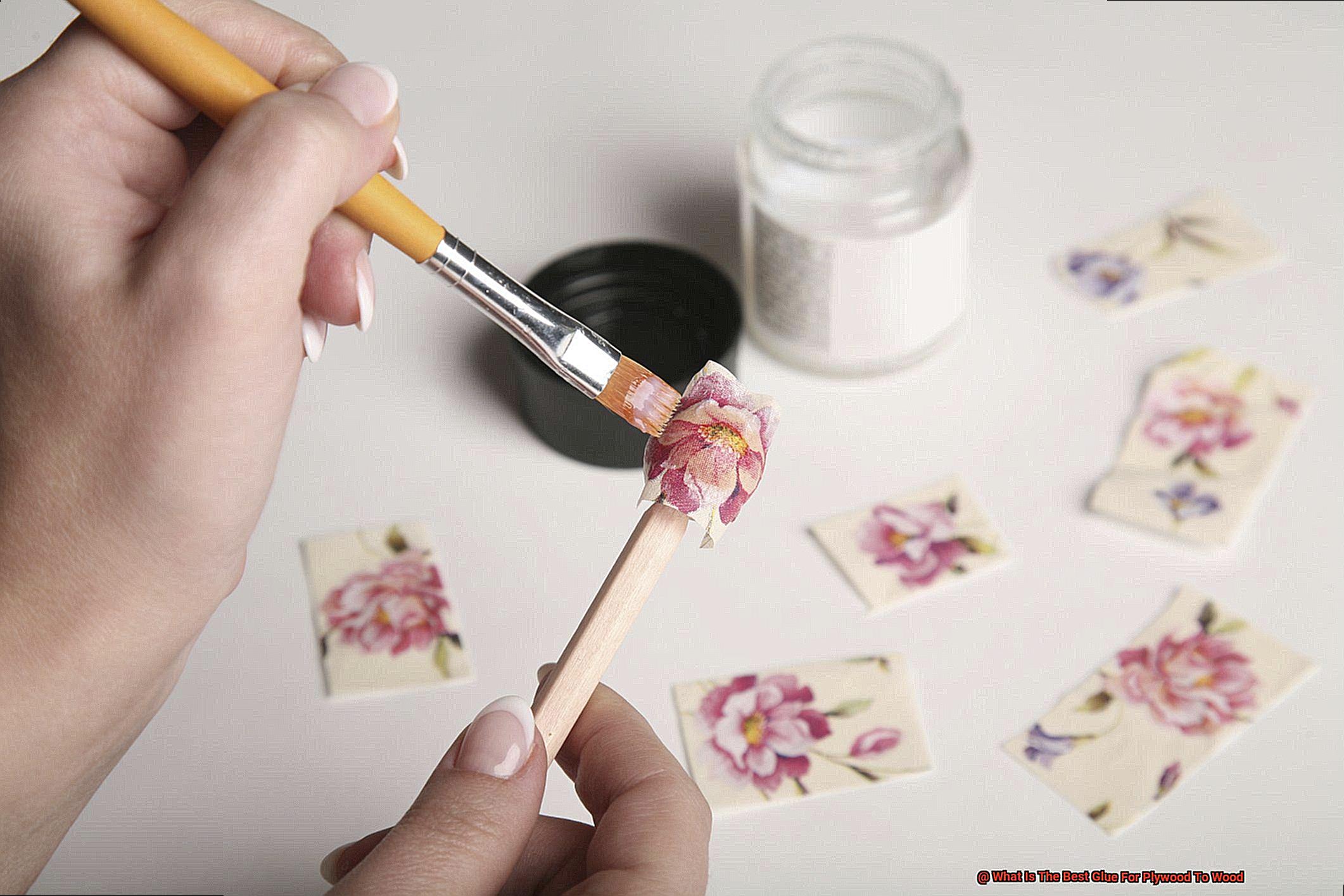
Cyanoacrylate Glue (Super Glue):
Behold the speedster of the adhesive universe—cyanoacrylate glue, better known as super glue. With lightning-fast bonding abilities, it is the go-to choice for small projects and quick repairs. Its efficiency and ease of use make it a reliable sidekick in times of urgent need. However, tread with caution when considering super glue for larger surfaces or projects requiring flexibility. Its brittleness might render it less suitable for such endeavors.
Tips for Proper Application and Curing Times
The foundation of a strong and durable bond begins with clean surfaces. To ensure optimal adhesion between plywood and wood, it is imperative to eliminate any dust, dirt, or debris that could compromise the bond. Take a meticulous approach by using a damp cloth or mild detergent to wipe away impurities. By starting with immaculate surfaces, you lay the groundwork for an unbreakable connection.
The Fine Balance of Even Application
A harmonious distribution of glue is vital for a successful bond. Achieving an even application can be likened to an artist’s delicate brush strokes on a canvas. Utilize a brush or spreader tool to coat both surfaces with a thin layer of glue. Be mindful not to go overboard, as excess glue can lead to undesirable squeeze-out and weaken the bond. Find the perfect equilibrium by applying just enough glue to cover the area – no more, no less.
Clamping – The Secret Ingredient
To solidify the bond between plywood and wood, clamping is your secret ingredient. Like a firm handshake sealing a deal, clamping ensures proper contact and bonding. Strategically position clamps along the joint, exerting equal pressure throughout. This symphony of pressure guarantees a tight and secure connection, making your project structurally sound.
The Virtue of Patience: Curing Time Unleashed
Curing time is the unsung hero in achieving maximum bond strength. It is during this period that the glue transforms from a sticky substance into an indomitable force. Respect this process by following the manufacturer’s instructions meticulously. Allow the glued joint to cure undisturbed for at least 24 hours before subjecting it to any stress or load. Patience is the key that unlocks a bond capable of withstanding the test of time.
Reinforcement and Vigilance
After the recommended curing time has elapsed, a critical step awaits – inspection. Thoroughly examine the bond for any signs of weakness or failure. Should doubts arise, it is essential to reinforce the connection by reapplying the glue and repeating the clamping process. By addressing concerns promptly, you ensure a flawless connection that will stand strong through any challenge.
Benefits of Using the Right Type of Glue for Bonding Plywood to Wood
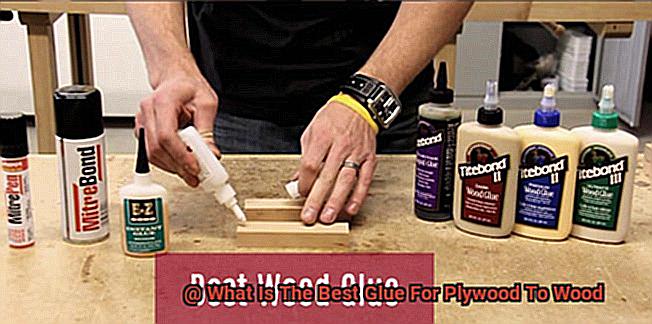
Unlocking the true potential of your woodworking projects lies in finding the perfect adhesive to bond plywood to wood. It’s like discovering the secret ingredient that holds everything together flawlessly. In this article, we delve into the captivating benefits of using the right type of glue, taking your projects to unparalleled heights.
Unbreakable Strength:
Picture a bond that defies all odds, standing strong against any force. The right glue transforms your plywood-to-wood connection into an unbreakable union. Bid farewell to weak links and separation concerns as this adhesive acts as a superpower, ensuring a secure and enduring bond that is steadfast in the face of challenges.
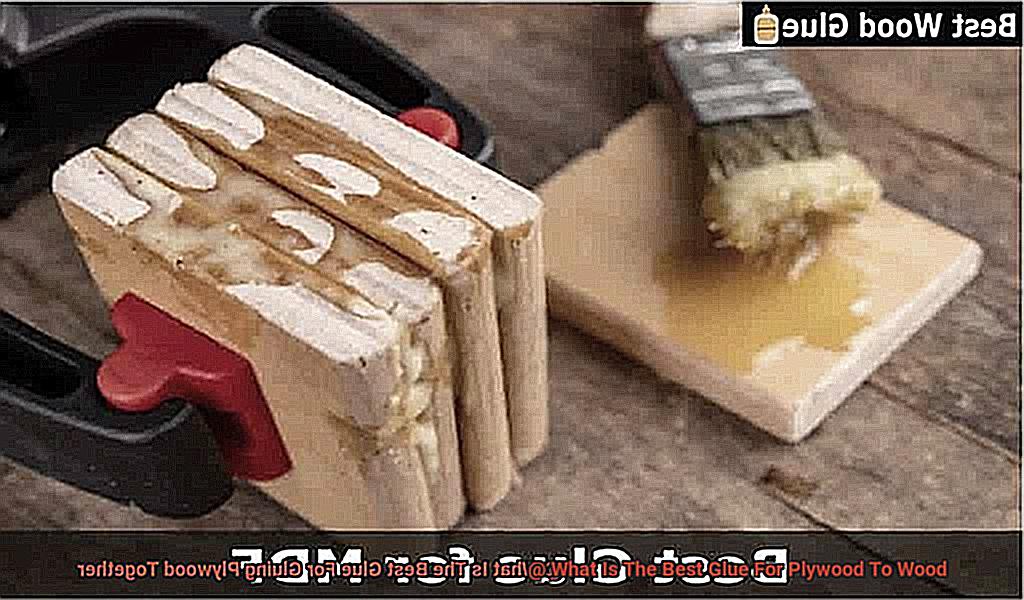
Enduring Durability:
Imagine a bond that laughs in the face of time and environmental factors. The right glue empowers your project with unmatched durability, conquering temperature fluctuations, moisture, and even vibrations. Whether it’s extreme weather or everyday wear and tear, your plywood-to-wood connection will remain unyielding.
Shield Against Moisture:
Moisture, the stealthy foe that can wreak havoc on bonded materials, is no match for the right adhesive. It becomes a protective shield, creating an impenetrable moisture barrier between plywood and wood. Say goodbye to warping, swelling, and delamination caused by water damage. With this adhesive guardian, your bond will survive even in damp conditions.
Harmonious Flexibility:
Wood possesses its own unique personality, with different types exhibiting varying degrees of flexibility. Achieving harmony between plywood and wood requires the right glue to step in. It allows these materials to move together seamlessly without compromising the bond’s integrity. Whether it’s shifts in temperature or humidity, your bond will remain resilient and flexible.
Versatility Unleashed:
No two projects are alike, and that’s where the true versatility of the right glue shines. Tailored adhesives cater to different plywood and wood species, offering a solution for every need. Hardwood, softwood, or a blend of both, there’s an adhesive designed just for you. This omnipotent versatility ensures optimal bond strength and performance, regardless of your specific application.
Common Mistakes to Avoid When Working with Glues on Plywood and Wood Projects
Embarking on a woodworking project is an exciting endeavor, but even the most skilled craftsmen can stumble when it comes to gluing plywood and wood. To ensure your projects are a resounding success, it’s crucial to avoid common mistakes that can lead to weak bonds, messy joints, or incomplete adhesion. As an expert in this field, I’m here to guide you through the pitfalls and share invaluable tips to achieve flawless results in your plywood and wood projects.
Choose the Right Glue for the Job:
Selecting the appropriate glue is the first step towards achieving a solid bond between plywood and wood. Don’t make the mistake of using generic glues or construction adhesives. Instead, opt for high-quality wood glue or specialized adhesives designed specifically for plywood to wood bonding. These options offer superior strength and durability, ensuring your projects stand the test of time.
Prepare Surfaces with Precision:
Surface preparation is often underestimated but plays a critical role in the success of any glue application. Prioritize cleaning both plywood and wood surfaces, ensuring they are dry and free from dust, dirt, and any remnants of previous finishes or coatings. To enhance adhesion, lightly sand both surfaces, creating a rough texture that allows the glue to penetrate deeply. Smooth surfaces on some types of plywood can be particularly challenging, so consider roughening them with sandpaper or applying a primer before gluing.
Apply Glue with Finesse:
Achieving the perfect balance when applying glue is essential for seamless bonding. Applying too much glue can lead to messy joints with excessive squeeze-out, while using too little may result in weak or incomplete adhesion. To ensure optimal results, delicately spread a thin, even layer of glue on both surfaces. Follow the manufacturer’s instructions regarding application techniques and drying time to maximize the bond’s integrity.
Embrace the Art of Patience:
In the fast-paced world we live in, patience is often a virtue forgotten. However, when it comes to gluing plywood and wood, rushing the bonding process can be detrimental. Allow ample time for the glue to dry and cure fully before subjecting your project to any stress or load. Remember that drying and curing times may vary depending on the type of glue used, so refer to the manufacturer’s recommendations for precise guidance. A patient approach will reward you with a robust and long-lasting bond.
Conclusion
When it comes to bonding plywood to wood, choosing the right glue is crucial.
The best glue for this task is one that provides a strong and durable bond, ensuring that your project stands the test of time. There are several options available, but one glue that consistently delivers exceptional results is polyurethane adhesive.
This versatile adhesive not only bonds plywood to wood effectively but also works well with other materials like metal and plastic. Its strong bond withstands heavy loads and extreme temperatures, making it ideal for both indoor and outdoor applications.
Another excellent choice is epoxy resin glue, which offers high strength and excellent water resistance. This type of glue forms an incredibly strong bond that can endure even the toughest conditions.
With its ability to fill gaps and inconsistencies in the wood surfaces, epoxy resin ensures a tight and secure connection between plywood and wood. Lastly, if you’re looking for a quick-drying option, consider using cyanoacrylate adhesive, commonly known as super glue.
Although not as strong as polyurethane or epoxy resin glues, super glue is perfect for smaller projects or repairs that require immediate bonding. It’s important to note that regardless of the type of glue you choose, proper surface preparation is essential for achieving optimal results.
Additionally, following the manufacturer’s instructions regarding application techniques and curing times will help ensure a successful bond between plywood and wood.

